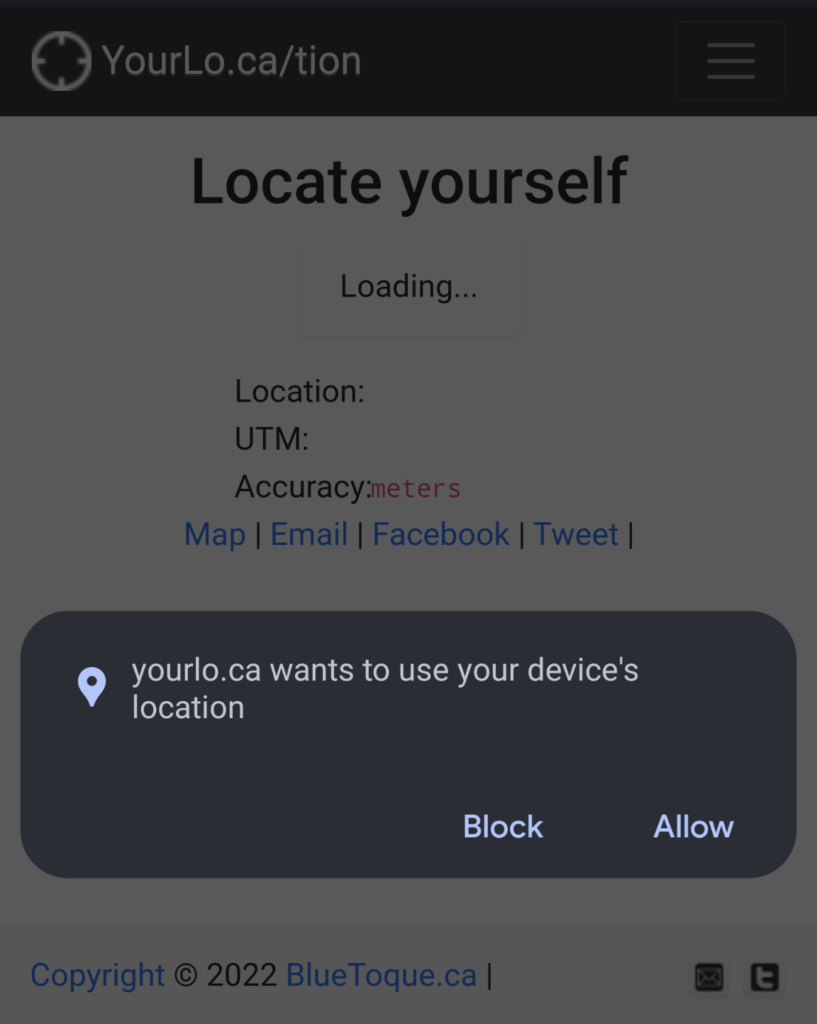The techniques used to determine someone’s location using this service have some limitations.
Access to the internet
Someone using this service via the web needs access to the internet to load the web page. Of course, prior to loading the web page, the subject of a search will need to be able to receive the initial URL via text or email.
JavaScript Support
This service makes extensive use of JavaScript and HTML5. If the browser on the user’s device does not have good JavaScript support, which is the case for some older Blackberry phones for instance, this service will not work.
In general, if the user does not have a “smart” phone, the service will probably not work.
Phone Settings
Many phone settings can interfere with obtaining the location.
Users can turn off location services on the phone, which disables the GPS entirely. Users can also disallow certain apps access to location services, in this case the default web browser. If the user has a corporate phone, their IT department may have disabled location services for everything except a few web sites.
User’s Permission
This service attempts to access the position sensor, or GPS device, on a user’s device. The first time a user loads a page that tries to access the sensor, the browser will prompt them to allow the page to access their position (see image below). Some users may see this as a security warning, and deny the page access. If the user does not allow the service to access the sensor, this service will not work.

For the service to work it is imperative that the subject of the search allow the software to access the GPS device.
How to enable access to the device’s location if a user has previously disallowed access.
GPS Signal
This service relies partly on the GPS signal, which can be affected by many factors including weather, topography, and the user’s view of the sky. This means that subjects who are inside will get results that are very poor compared to those that are outside. Additionally, a user may have turned the GPS on their device off.
For the service to work, the subject of the search must have the GPS on, and have a relatively clear view of the sky.
Mobile Signal
This service also makes use of the mobile signal to determine the network location. If the user has a marginal connection because of remote location or other factors, this will affect this service’s ability to determine their location.
Battery Life
A user in marginal conditions can easily run down the battery life of their unit. The single biggest draw of battery life on mobile devices is the back light on the screen. Using this service should not take very long, but it will require some screen time, and interaction with the web site. A low battery could affect the performance of the service.
Desktop (non-mobile)
Users accessing the service from a desktop or laptop device will have varying results depending on whether they are using the Chome browser and if they are connected to the network via WiFi.
When Google gathered the StreetView data, they also enumerated WiFi Access Points (WAP) and recorded their positions. Each WAP has a unique identifier. A device with a wireless connection can”see” the ID of the WAP it is connected to and others in the vicinity, as well as their relative strenghts. This information can be used to assist in the determination of the position of a device.
If the device is not connected via WiFi, the IP address is used to determine position, often to a very coarse and unusable (for the purposes of this software) level.